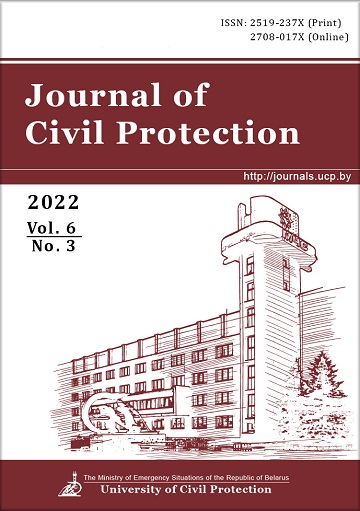Particularities of methodology of investigation of passenger cars arsons
DOI:
https://doi.org/10.33408/2519-237X.2022.6-3.372Keywords:
fire, fire investigation, methodology, passenger carAbstract
Purpose. Improvement the methodology for investigating fires on motor vehicles.
Methods. Theoretical analysis, synthesis, systematization.
Findings. The article is devoted to the investigation of cases of fires in cars. The stages of inspection of vehicles during arson are described taking into account modern trends in the development of forensic tactics, particularities of working with physical evidence, means, techniques and methods for detecting and removing traces.
Application field of research. The presented results can be used in law enforcement activities in the investigation of fires on vehicles.
References
Khramov S.M. Latentnaya prestupnost': metodologiya poznaniya i osnovnye napravleniya protivodeystviya [Latent criminality: methodology of knowledge and main directions of counteraction]. Brest, Brest State university, 2010, 153 p. (rus)
Criminal profiling: international theory, research, and practice. Ed. by R.N. Kocsis. Totowa, New Jersey, Humana Press Inc, 2007. 217 р.
Obraztsov V.A. Vyyavlenie i izoblichenie prestupnika [Identification and exposure of the criminal]. Moscow. Yurist, 1997, 134 р. (rus)
Zhang D., Xiao L., Wang Y., Huang G. Study on vehicle fire safety: Statistic, investigation methods and experimental analysis. Safety Science, 2019. Vol. 117, Pp. 194–204. DOI: https://www.doi.org/10.1016/j.ssci.2019.03.030.
Yoshioka Н., Iwami T., Takeya Sh. Experimental study on car fire with respect to urban fire spreading. Fire Science and Technology, 2018. Vol. 37, No. 1. Pp. 17–30. DOI: https://www.doi.org/10.3210/fst.37.17.
Davis J.R. Detection of Gasoline as an Accelerant Spreading. Fire Science and Technology, 1980. Vol. 3, No. 4. Pp. 55–61.
Benmeir P., Lusthaus S., Wexler M. [et al.] Terrorist bombing with a 'Molotov cocktail' inside travelling cars: an old weapon for a new burn syndrome? Burns: Journal of the International Society for Burn Injuries, 1994. Vol. 20, No. 3. Pp. 248–250. DOI: https://www.doi.org/10.1016/0305-4179(94)90192-9.
Li D., Zhu G., Zhu H., Yu Z., Gao Y., Jiang X. Flame spread and smoke temperature of full-scale fire test of car fire. Case Studies in Thermal Engineering, 2017. Vol. 10. Pp. 315–324. DOI: https://www.doi.org/10.1016/j.csite.2017.08.001.
Cheng Y.P., John R. Experimental research of motorcar fire. Journal of China University of Mining and Technology, 2002. Vol. 31, No. 6. Pp. 557–560.
Okamoto K., Watanabe N., Hagimoto Y., Chigira T. [et al.] Burning behavior of sedan passenger cars. Fire Safety Journal, 2009. Vol. 44, Iss. 3. Pp. 301–310. DOI: https://www.doi.org/10.1016/j.firesaf.2008.07.001.
Okamoto K., Otake T., Miyamoto H., Honma M., Watanabe N. Burning behavior of minivan passenger cars. Fire Safety Journal, 2013. Vol. 62, Part C. Pp. 272–280. DOI: https://www.doi.org/10.1016/j.firesaf.2013.09.010.
Published
How to Cite
License
Copyright (c) 2022 Pasovets V.N., Kovtun V.A., Goroshko E.Yu., Tagiev Sh.Sh.

This work is licensed under a Creative Commons Attribution-NonCommercial 4.0 International License.




















